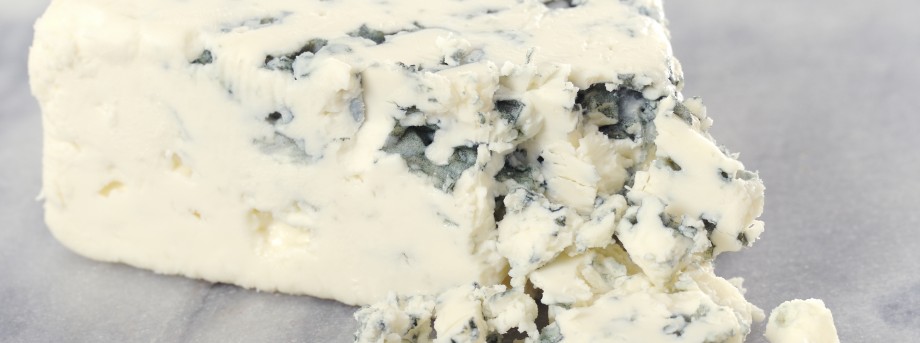The University of Nottingham
 Exchange online
Exchange online
Research Exchange
It’s a cracker! Research shows how blue cheese gets its distinctive smell

As the nation prepares to tuck into mounds of Stilton this Christmas, researchers have pinpointed for the first time the yeast which helps give blue cheese its distinctive aroma.
A study undertaken by academics at the Universities of Nottingham and Northampton has discovered a particular ‘secondary microflora’ component is responsible for boosting the smell of blue cheese.
The scientists have been looking at the role of the various microorganisms in the production of the East Midlands’ famous blue cheeses like Stilton.
The mould Penicillium roqueforti is added by manufacturers to produce the ‘blue’ in cheeses but now the researchers can confirm that a yeast called Y.lipolytica directly influences the distinct smell of the popular dairy products.
The research team involved Professor Christine Dodd and Dr Robert Linforth from Nottingham’s Division of Food Sciences, in collaboration with Dr Kostas Gkatzionis and Professor Carol Phillips from Northampton, along with two postgraduate research students.
As part of the project, funded with a £53,871 grant from the Food and Drink iNet (Innovation Network), run by the Food and Drink Forum, they also worked in conjunction with Stichelton Dairy in north Nottinghamshire.
The researchers have developed a small scale cheese model in the lab which allowed the scientists to delve into the role of the secondary microflora in more detail and will be used to research other cheese-production issues.
The research findings are being shared with cheese producers across the UK in the hope that it will help them to achieve greater consistency in production.
Professor Dodd at The University of Nottingham said: “The development of the mini cheese model provides a tool for us to investigate other issues that concern the industry, such as the testing of new starter cultures, alternative rennets and the effect of modifications in the production procedure, for example reducing salt.”
The researchers used a team of trained sensory experts to test different cheese models which contained varying yeast levels to work out which particular strain was responsible for improving the aroma.
“The panel was able to discriminate between samples with different yeast levels, suggesting that the variation in microbial flora was noticeable in the aroma. Limiting aroma variation is paramount to producing more consistent blue cheeses,” said Dr Kostas Gkatzionis.
The work follows on from a grant last year from the Food and Drink iNet, part-funded by the European Regional Development Fund (ERDF) and run by the Food and Drink Forum that helped to prove the fact that the secondary microflora was a key influencer when it came to a cheese’s flavour. These microflora are not added deliberately during cheese production — they are selected during the cheese making process from various sources including the cheese factory environment.
Food and Drink iNet director Richard Worrall said: “Ultimately, we hope this work will lead to greater consistency during production for Britain’s cheese makers, which will help them to achieve a greater slice of the worldwide blue cheese market, which is worth millions.”
Tags: blue cheese, Division of Food Sciences, ERDF, Food and Drink Forum, PhD researchers, Stilton, worldwide blue cheese market
Leave a Reply
Other

Top prize for quantum physicist
A University of Nottingham physicist has won a prestigious medal from the Institute of Physics for […]

Zero carbon HOUSE designed and built by students comes home
Design and construct a low cost, zero carbon, family starter home, transport it to Spain, build […]